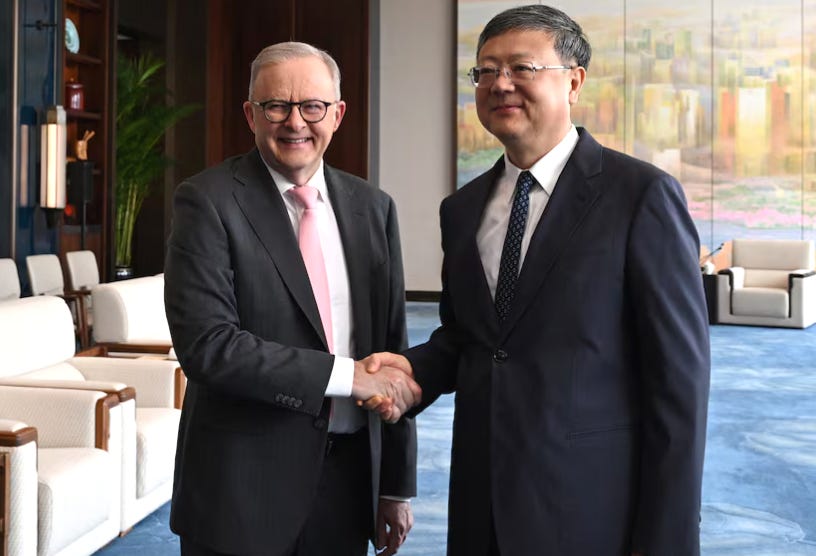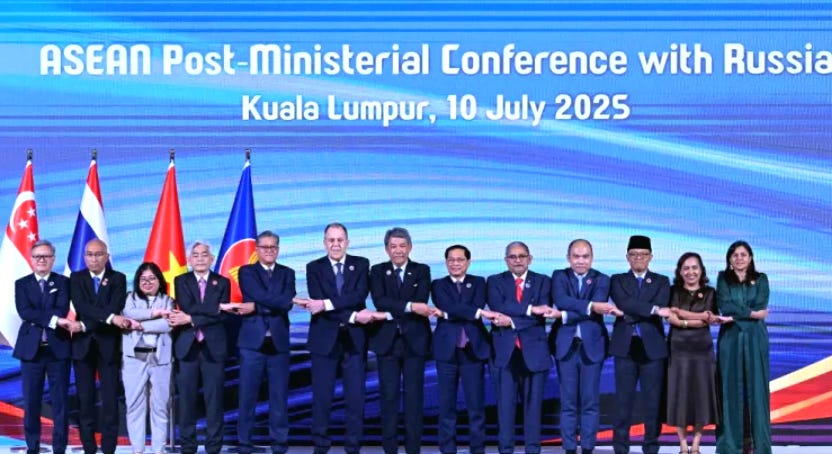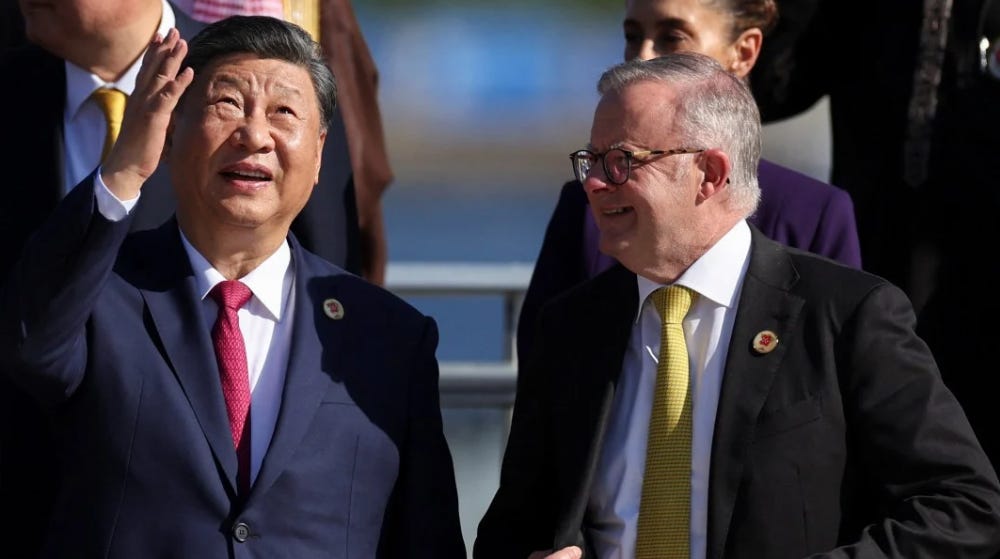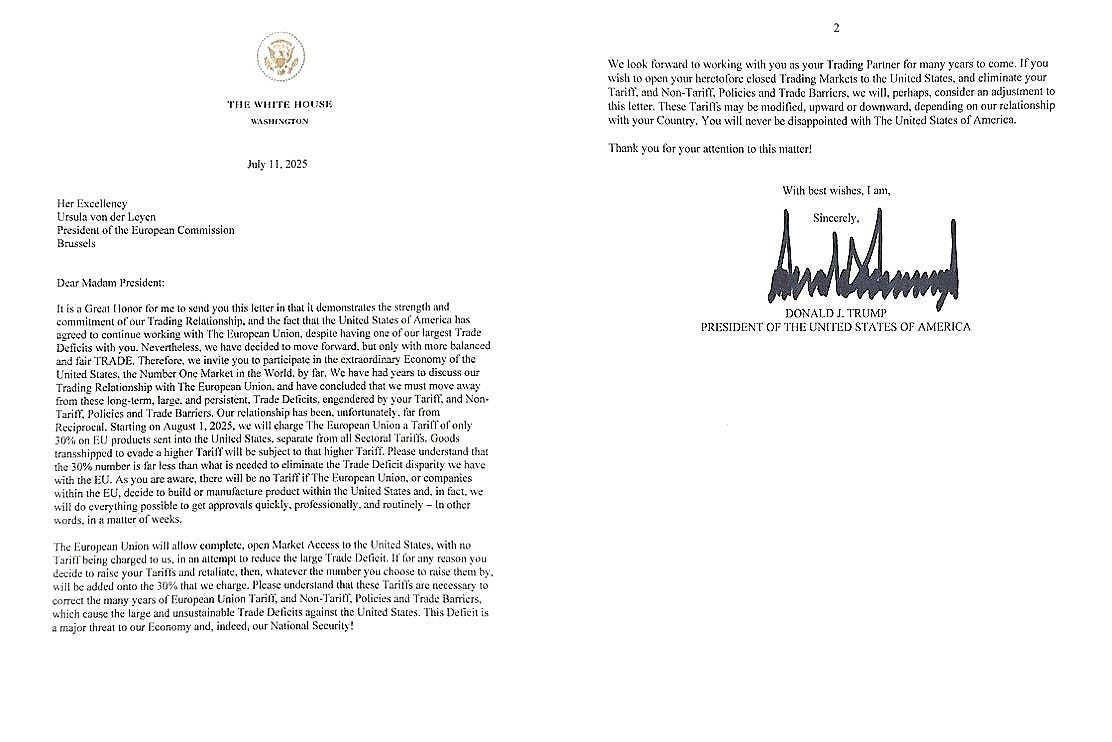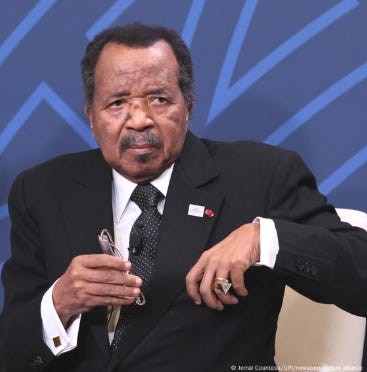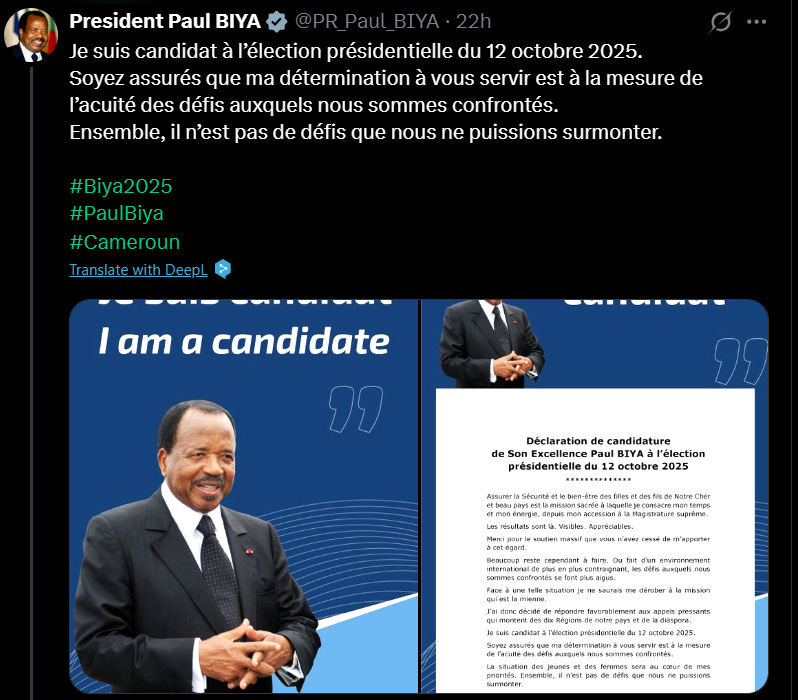U.S. President Threatens New Wave of Tariffs, Australian PM Visits China to Strengthen Trade Ties, Cameroonian President Biya to Seek Re-election, and More
Grinfi Political Risk Edge Intelligence Briefing
Welcome to this week’s edition of Grinfi Political Risk Edge, your trusted source for expert political risk analysis and strategic intelligence. In this issue, we examine key geopolitical events shaping the defense, energy, and DeFi markets, providing a deep, beyond-the-headlines assessment. Anticipate, Adapt, and Excel!
But first, let’s begin the week with a laugh 😄 to brighten the mood.
Help us serve you better and improve Grinfi Political Risk Edge by taking this brief, fully anonymized reader survey.
"The strongest is never strong enough to always be the master, unless he transforms strength into right, and obedience into duty."
Jean-Jacques Rousseau, The Social Contract. Translated by G. D. H. Cole. London: J.M. Dent, 1762. Book I, Chapter III.
Disclaimer: The opinion expressed in this quote does not represent our views but is intended for reflection purposes only.
From Grinfi Political Risk Observatory (GPRO), here’s what we’re monitoring:
High Impact Situational Updates
MAJOR HEADLINES
— China Agrees to Sign ASEAN Treaty Banning Nuclear Weapons
On July 10, during the 58th ASEAN Foreign Ministers’ Meeting in Kuala Lumpur, China announced its commitment to sign the Protocol to the Southeast Asian Nuclear Weapon Free Zone (SEANWFZ) Treaty, also known as the Bangkok Treaty.
The treaty, signed by ASEAN’s 10 member states in 1995 and in force since 1997, prohibits the development, manufacture, acquisition, possession, or control of nuclear weapons within the territories, continental shelves, and exclusive economic zones of the member states.
China’s pledge, confirmed by Malaysian Foreign Minister Mohamad Hasan following talks at the ASEAN Post Ministerial Conference with Chinese Foreign Minister Wang Yi, will make China the first among the five recognized nuclear armed states (China, the United States, Russia, France, and the United Kingdom) to endorse the treaty’s protocol without reservations. Formal signing is expected upon completion of documentation later in 2025.
At the same time, China advanced its negotiations on Version 3.0 of the China ASEAN Free Trade Area (CAFTA 3.0), as new US tariffs, levied by U.S. President Donald Trump and targeting six (6) ASEAN countries, are set to strain trade relations. At the summit, Chinese Foreign Minister Wang Yi emphasized collaboration on green transitions, low carbon initiatives, and electric vehicle supply chains, reinforcing a trade relationship that reached nearly $970 billion in 2024, a fourfold increase since 2005.
US Secretary of State Marco Rubio, who was also present at the summit, held discussions with his Chinese counterpart aimed at resolving current trade tensions and addressing security issues in the Indo Pacific.
Despite these economic overtures and signs of rapprochement, tensions persist in the South China Sea, where China’s recent naval exercises near disputed reefs have raised concerns in the Philippines and Vietnam.
Meanwhile, ASEAN’s ongoing push for a binding Code of Conduct among member states remains unresolved, particularly as divisions over maritime disputes deepen and the United States continues to expand its naval deployments in the region.
— Australian PM Visits China to Strengthen Trade Ties
On July 12, Australian Prime Minister Anthony Albanese arrived in China for a six-day visit. He began in Shanghai and is scheduled to meet President Xi Jinping, Premier Li Qiang, and other senior officials to stabilize and reinforce trade ties amid ongoing global tariff pressures.
The visit, which is Albanese’s second to China since taking office in 2022, aims to expand cooperation in critical minerals (lithium, rare earths), agriculture (beef, wine), tourism, and energy, while reviewing the 2015 Australia-China Free Trade Agreement. China, absorbing about 25 to 32% of Australia’s exports (approximately $190 billion in 2024), is critical for iron ore (around 60% of exports) and liquefied natural gas.
Relations have improved since China lifted tariffs on Australian wine and beef imposed between 2020 and 2023, but tensions persist over China’s South China Sea activities, where its claims overlap with ASEAN nations like the Philippines and Vietnam.
At the July 10 ASEAN summit, Australian Foreign Minister Penny Wong raised concerns about China’s naval buildup, including reports of new vessels deployed near disputed reefs.
At the same time, Australia appears to be tiptoeing a delicate balance with its cherished allies, upholding its AUKUS security pact with the U.S. and UK while managing challenges from U.S. tariffs (around 10% on Australian exports since April 2025). However, its current pursuit of stronger trade ties with China might compromise its relationship with the U.S. and draw more of Trump’s geoeconomic and strategic ire.
— U.S. President Threatens New Wave of Tariffs by August 1
On July 11, U.S. President Donald Trump announced a new wave of tariffs targeting 14 countries, effective August 1, unless bilateral trade agreements are reached.
The tariffs, ranging from 25% to 36%, affect Japan and South Korea (25% on automobiles, steel, and electronics), Cambodia and Thailand (36% on textiles and agricultural goods), Malaysia (25% on electronics and palm oil), Indonesia (32% on similar goods), and South Africa (30% on precious metals and other products).
The European Union and Mexico face 30% tariffs, targeting goods such as French cheese, German electronics, and Mexican automotive parts. This follows a 10% baseline tariff introduced in April 2025.
Vietnam negotiated a reduction from an initially proposed 46% tariff to 20% on exports including apparel and footwear. Trump sent letters to Japan’s Prime Minister Shigeru Ishiba and South Korea’s President Lee Jae-myung demanding concessions on autos, agriculture, and digital trade. Another letter was addressed to the President of the European Commission, Ursula Von der Leyen:
In response, EU Trade Commissioner Maroš Šefčovič called the tariffs ‘unacceptable’ and has prepared $72 billion in retaliatory tariffs targeting U.S. goods such as American-made airplanes and bourbon whiskey, although ongoing discussions aim to pause them. Mexico has called the tariffs “unfair,” while Japan faces domestic pressure ahead of its July 20 upper house elections, complicating concessions.
The tariffs will strongly disrupt global supply chains and trade and could lead to cost increases of 5–10% for U.S. consumers, according to several forecasts. A projected 0.5% reduction in GDP growth is expected for affected Asian economies due to decreased exports and economic disruptions.
Following the announcement, U.S. markets have remained cautiously muted and largely unruffled, while some Asian and European indices experienced minor declines. However, if trade negotiations are not reached soon, further market volatility and inflation risks are anticipated.
— Cameroonian President Biya to Seek Re-election
On July 13, Cameroonian President Paul Biya, aged 92 and in power since 1982, confirmed his candidacy for an eighth term in the presidential election scheduled for October 12.
Since the announcement, speculations have been rife about succession plans and the future of the country’s political stability, especially as Biya has rarely been seen in public and has largely been in poor health. Tongues have been wagging, and the questions on everyone’s lips are: Who is really in charge? Who will take over, as the nonagenarian appears barely capable of carrying out his presidential duties?
Nonetheless, Biya is expected to be the candidate of the Cameroon People’s Democratic Movement (CPDM). The CPDM has maintained control allegedly through electoral irregularities, media restrictions, and the repression of opposition, fueling widespread public discontent.
At the moment, Cameroon is politically fragile and high risk.
The Anglophone crisis in the country’s Northwest and Southwest regions, ongoing since 2017, has internally displaced approximately 580,000 to 730,000 people, with total displacement including refugees nearing 900,000, and has caused over 6,000 deaths, according to the United Nations Office for the Coordination of Humanitarian Affairs (OCHA).
Meanwhile, Boko Haram’s insurgency in the Far North has claimed around 3,200 lives since 2014, based on International Crisis Group reports. Economic challenges exacerbate tensions, with inflation at about 6.5%, projected GDP growth of 3.5% for 2025, and youth unemployment near 14%.
Key sectors such as cocoa, accounting for roughly 22% of exports, and oil, about 38% of export revenue, face risks if protests and unrest escalate during the election campaign.
Rising instability may further strain social cohesion and economic stability, with growing fears of spillover into an already fragile Nigeria and Chad.
— U.S. Justice Department Rules Out Epstein Client List as Public Outrage Grows
On July 7, the U.S. Justice Department announced that it would not release additional files related to the Jeffrey Epstein sex trafficking case.


